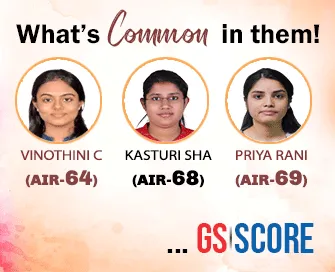

1st August 2025 (3 Topics)
Context:
The Supreme Court is currently hearing petitions against the Election Commission of India’s Special Intensive Revision (SIR) in Bihar, which mandates fresh proof of citizenship for all voters under a one-month deadline, raising concerns about mass disenfranchisement.
Constitutional Foundations Undermined
- Historical Vision of Universal Franchise:India, post-Independence, took a radical democratic leap by ensuring voting rights to all adults irrespective of caste, literacy, gender, or wealth — a principle defended by Dr. B.R. Ambedkar and operationalized by CEC Sukumar Sen in 1951.
- Presumed Inclusion to Presumptive Exclusion:The SIR process shifts the voter validation framework from presumed inclusion to suspicion-based exclusion, contradicting the foundational ethos of democratic participation.
- Structural Inaccessibility:By rejecting widely held IDs like Aadhaar or ration cards and demanding rare documents like birth certificates or passports, the process disproportionately excludes the poor, illiterate, and rural populations.
Procedural Concerns and Legal Contradictions
- Denial of Due Process:The absence of safeguards such as appeals, time extensions, or grandfather clauses violates the procedural due process established in Supreme Court judgments like Rahim Ali vs State of Assam (2024) and Lal Babu Hussein vs ERO (1995).
- Exclusion Through Bureaucracy:The ECI’s technical justifications mask the real impact — a disenfranchisement of nearly 65 lakh people in Bihar, drawing parallels to the “D-Voter” crisis in Assam.
- Failure of Institutional Empathy:Despite judicial questioning of humanitarian costs, the ECI’s rigid adherence to technicalities has revealed a systemic indifference to electoral justice and citizen inclusion.
Broader Implications and Democratic Decline
- Democracy as Belonging, Not Documentation:Voting is a right arising from citizenship, not contingent upon one's capacity to produce state-validated papers; this exclusionary shift undermines the moral foundation of democracy.
- Creation of Electoral Inequality:A new class divide may emerge — those with access to documentation versus the voiceless undocumented — leading to policymaking biased in favour of the urban, salaried, and technologically enabled class.
- Democratic Vigilance as a Civic Imperative:The editorial calls for collective resistance by the Supreme Court, Parliament, and civil society to reaffirm that voting is not a privilege but a constitutional guarantee for all citizens, not just the documented elite.
Practice Question:
Examine the constitutional and democratic implications of documentation-based voter verification processes in India. In light of recent initiatives such as Bihar’s Special Intensive Revision, discuss how such measures impact the principle of universal adult suffrage. (250 words)


Context:
The National Education Policy (NEP) 2020 has catalysed structural transformations in Early Childhood Care and Education (ECCE), including the introduction of preschool classes in government schools and a potential reorientation of the Anganwadi system.
Expansion of ECCE Infrastructure
- Balvatika Classes in Government Schools:The NEP 2020 mandates the establishment of Balvatika classes (1, 2, and 3) in government schools for children aged 3–6 years, addressing the earlier exclusion of such age groups from formal public education.
- Implications for Personnel and Financing:The shift necessitates large-scale planning in recruitment, training, and financing of early childhood educators, supported under the Samagra Shiksha scheme, though several States/UTs have underutilised this provision.
- Tracking of Implementation Gaps:While some States have started preschool classes, others remain inactive or have only partially adopted preparatory measures, highlighting the urgent need for monitoring state-level compliance and outcomes.
Migration from Anganwadis and Education-Nutrition Balance
- Parent-Driven Migration to Schools:Data from regions like Dadra and Nagar Haveli reveal a strong parental preference for school-based preschool classes over Anganwadis, driven by perceived superior educational opportunities.
- Challenge to Anganwadi Relevance:As children shift out of Anganwadis, their traditional role in ECCE weakens unless reformed. The ‘PoshanBhiPadhaiBhi’ initiative aims to reinforce their educational function but requires grassroots-level implementation.
- Avoiding Schoolification of Preschooling:Government schools must guard against early academic pressures and preserve the play-based, holistic nature of preschool education to nurture cognitive, emotional, and motor development.
Reimagining ECCE: Focusing on 0–3 Years and Home Visits
- Global and National Evidence on Early Years:Research such as the Perry Preschool Project and the Yale-Pratham Odisha study underline the disproportionately high developmental returns of interventions during the first three years of life.
- Need to Devolve 0–3 Focus to Anganwadis:Experts like V.K. Paul and N.C. Saxena have long advocated shifting Anganwadi efforts toward intensive care of children aged 0–3 and maternal health through structured home visits under the ICDS framework.
- Strategic Reallocation of ECCE Responsibilities:With schools catering to 3–6 year-olds, Anganwadis can be repositioned to specialise in 0–3 care and maternal support, ensuring an integrated, life-cycle approach to child development.
Practice Question:
Discuss the structural reforms introduced under the National Education Policy 2020 with respect to Early Childhood Care and Education (ECCE). How can the functional realignment between Anganwadis and government schools enhance the effectiveness of ECCE in India? (250 words)


Context:
The imposition of 25% tariffs by the United States on Indian exports and the backdrop of global economic volatility have posed significant short-term trade and monetary policy challenges for India.
Trade and Tariff-Linked Disruptions
- US Tariffs Impact Export Composition:The newly imposed 25% tariffs affect Indian exports like textiles, chemicals, pharmaceuticals, and auto components, which together form a critical segment of India’s export basket contributing over 2% of GDP.
- Supply Chain and Employment Shock:The estimated cost of these tariffs may reach $30 billion, negatively influencing employment, supply chains, and GDP momentum, particularly in the short term.
- Energy Diversification amid Geopolitical Shifts:India has diversified its energy imports—Russian crude oil imports rose from 2% (FY22) to 36% (FY25)—and is now tapping LNG and US crude, aiming to convert supply risks into strategic resilience.
Financial Market Sensitivity and Policy Response
- Foreign Capital Outflows Intensify Pressure:In July 2025, foreign portfolio investors withdrew $1.4 billion, weakening the Rupee by nearly 2%, signaling investor apprehension amidst global uncertainty.
- RBI’s Balancing Act on Inflation and Stability:The RBI faces a trade-off—with inflation projected around 5%, rate cuts must be managed cautiously to avoid exacerbating capital outflows and exchange rate volatility.
- Currency Depreciation Complicates Policy:A weaker rupee increases the import bill, affects policy transmission, and amplifies monetary tightening dilemmas for the central bank.
Strategic Pragmatism and Sectoral Resilience
- Defence and Technology Autonomy Sought:Despite continued defence imports from Russia, India is incrementally pursuing domestic production and Make in India initiatives to reduce strategic dependency.
- Resilient Sectors Counterbalance External Shocks:Sectors such as financial services, consumer goods, and technology exports remain insulated from global volatility and continue to perform robustly.
- Need for Tactical Economic Diplomacy:India’s approach emphasizes smart bargaining over symbolic deals, advocating for structural relief across agriculture, defence, and tech markets while countering protectionist trends from nations like the US, EU, and UK.
PracticeQuestion:
In light of the escalating global trade tensions and unilateral tariff measures by major economies, critically examine how India can balance its external sector vulnerabilities with its long-term objective of strategic economic autonomy. Illustrate with examples from recent trade and energy diversification decisions. (250 words)




